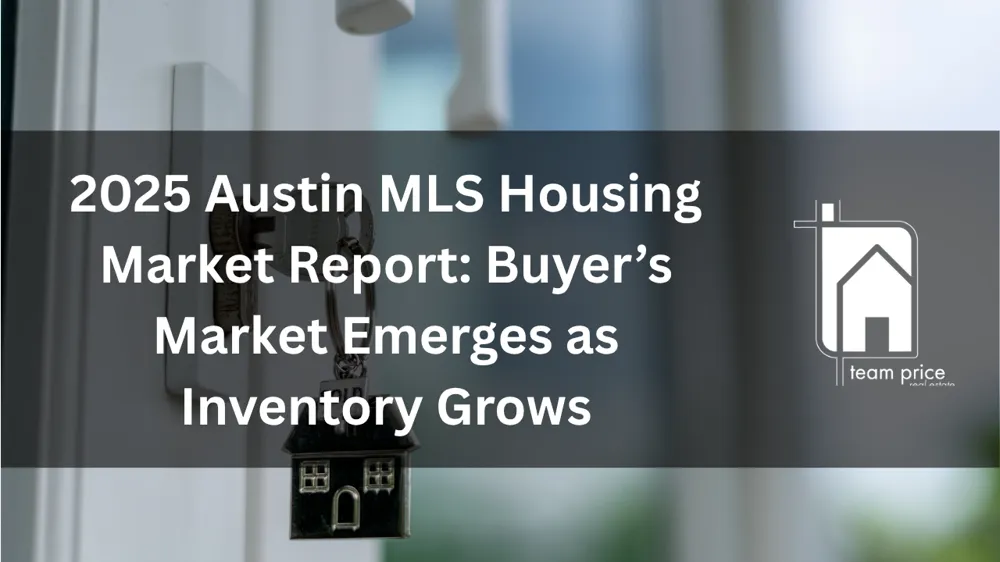July 29, 2025: The Austin MLS housing market in 2025 is showing clear signs of a transition, with data pointing toward more favorable conditions for buyers compared to recent years. Market performance indicators such as the Active-to-Pending Ratio, Active-to-Sold Ratio, and Market Health Index all reflect slowing demand, increased inventory, and a decrease in market velocity across the Austin area.
The Active-to-Pending Ratio, which compares the number of homes actively listed to those under contract, currently sits at 5.07 in 2025. Historically, this figure averages 2.84. Ratios below 2 indicate strong seller’s markets, while those above 3 suggest buyer’s markets. The current level reflects a slower pace of homes going under contract in Austin, meaning listings are taking longer to secure buyers.
Similarly, the Active-to-Sold Ratio has risen to 8.25 months of inventory, well above the historical average of 4.17 months. In real estate, less than five months of inventory favors sellers, five to seven months signals balance, and more than seven months points to a buyer’s market. With current levels surpassing seven months, conditions in the Austin MLS clearly lean toward buyers, reflecting an oversupply compared to sales.
The Pending-to-Sold Ratio is 1.63, slightly above its historical average of 1.49. This indicates that while demand has slowed, most contracts are still converting to closed sales. The efficiency of this conversion suggests buyers in the Austin MLS remain serious and able to finalize transactions despite overall weaker demand.
Market freshness is measured by the New-to-Active Ratio, which shows how much of the current inventory consists of new listings. In 2025, the ratio is 25.16%, significantly below the historical average of 41.85%. This reduced inflow of new listings indicates that while inventory is rising overall, fewer fresh options are entering the Austin MLS market, which could eventually slow the rate of growth in active supply.
The Sold-to-Active Ratio, commonly known as the Absorption Rate, is 12.12% in 2025, compared to a historical average of 31.84%. A healthy market typically sees absorption rates above 20%. The current figure shows that a much smaller share of available homes is selling each month, underscoring softer demand in the Austin MLS.
Another measure of demand strength, the Activity Index, currently stands at 16.48%. Historically, it averages 29.34%. This decline signals reduced velocity in the Austin housing market, with fewer homes under contract relative to the total number of listings.
The Pending-to-Supply Pressure Index, which accounts for both pending and sold activity, is at 376, far below the long-term average of 1,313. Lower levels indicate less pressure on available supply, aligning with today’s weaker demand.
The Demand-Supply Velocity Indicator further confirms this trend, coming in at 31.85%, compared to a historical average of 78.73%. Higher values suggest strong demand moving inventory quickly, while current levels reflect a slower-moving market in Austin.
The Market Health Index (MHI) provides a comprehensive measure by combining absorption, velocity, and inventory trends. In 2025, the MHI is 13.86%, well below its long-term average of 30.84%. Since markets below 30% indicate a buyer’s market, this confirms the ongoing shift in Austin MLS conditions.
Lastly, the Demand Momentum Index (DMI) is -31.06%, showing that momentum has turned negative. This metric highlights declining buyer activity, suggesting that fewer new buyers are entering the Austin MLS market compared to those exiting.
Overall, the Austin MLS housing market data for 2025 paints a picture of cooling demand, rising supply, and slower transaction velocity. While contract-to-sale conversions remain steady, the broader indicators confirm that the balance has shifted, giving buyers greater negotiating power and more inventory to choose from.
Austin MLS Housing Market 2025: Top Questions Answered:
1. Is the Austin MLS housing market in 2025 a buyer’s or seller’s market?
The Austin MLS housing market in 2025 is a buyer’s market. The Active-to-Sold Ratio has risen to 8.25 months of inventory, which is well above the balanced range of 5 to 7 months. Historically, the market average is 4.17 months, so this shift indicates more supply relative to sales. Additionally, the Market Health Index (MHI) is 13.86%, far below its historical average of 30.84%. Markets below 30% are considered buyer’s markets, confirming that conditions favor buyers in 2025.
2. How fast are homes selling in the Austin MLS in 2025?
Homes in the Austin MLS are moving more slowly compared to previous years. The Active-to-Pending Ratio is 5.07, significantly higher than the historical average of 2.84. This means listings are taking longer to go under contract. The ActivityIndex, which measures the share of listings under contract, is 16.48%, well below its long-term average of 29.34%. Together, these indicators show reduced market velocity and longer times on the market for sellers.
3. What is the absorption rate in the Austin MLS for 2025?
The absorption rate, measured by the Sold-to-Active Ratio, is 12.12% in 2025. Historically, this figure averages 31.84%. A healthy market generally sees absorption above 20%, while values below 10% suggest sluggish conditions. The current rate shows that only about one in eight active listings is selling within a given month, highlighting weaker demand and reinforcing the buyer’s market conditions.
4. Are new listings keeping up with buyer demand in Austin MLS 2025?
New listings are not keeping pace with historical norms. The New-to-Active Ratio is 25.16%, compared to a long-term average of 41.85%. This means fewer fresh listings are entering the market relative to total inventory. Although overall supply is growing, the reduced flow of new homes may eventually moderate the pace at which inventory expands.
5. What does the Demand Momentum Index (DMI) indicate about buyer activity in the Austin MLS in 2025?
The Demand Momentum Index (DMI) is -31.06% in 2025, showing negative buyer momentum. A negative DMI signals that fewer new buyers are entering the market compared to those completing or exiting transactions. This decline in demand momentum aligns with other indicators such as the low Demand-Supply Velocity Indicator of 31.85% (versus a historical average of 78.73%) and confirms reduced competition among buyers.




